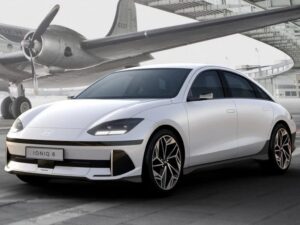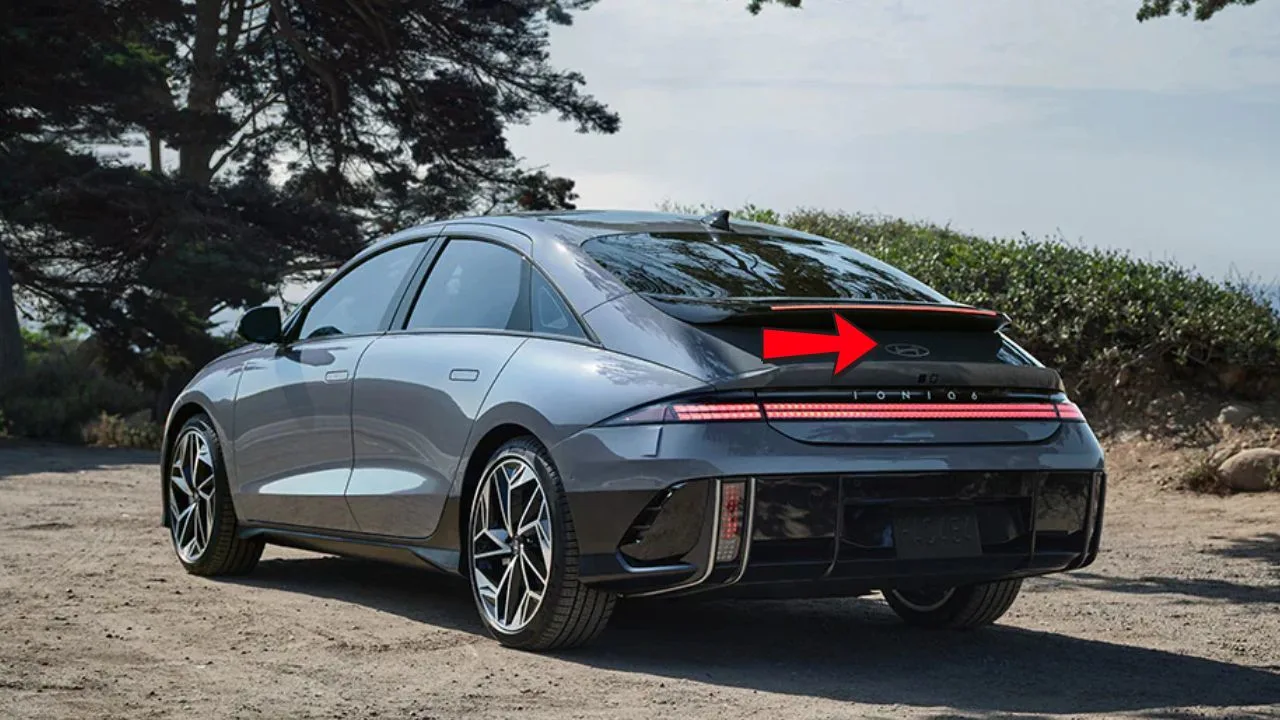Hyundai is set to electrify Australian roads with the highly anticipated 2026 Hyundai Ioniq 6 N, a high-performance electric sedan that promises to redefine the segment. Confirmed for local showrooms in the first half of 2026, this model builds on the success of the Ioniq 5 N and leverages Hyundai’s cutting-edge electric vehicle (EV) technology. With an expected output of around 641 horsepower, aggressive styling, and a suite of performance enhancements, the Ioniq 6 N is poised to compete with premium rivals like the Tesla Model 3 Performance and BMW i4 M50. This article delves into the Ioniq 6 N’s specifications, design, expected pricing, and its significance for Australia’s EV market, providing a comprehensive guide for enthusiasts and prospective buyers.
The Rise of Hyundai’s N Division
Hyundai’s N performance division has earned global acclaim for transforming the brand’s image from budget-friendly to dynamic and exhilarating. Models like the i30 N and Veloster N have showcased Hyundai’s ability to craft driver-focused vehicles, while the Ioniq 5 N, launched in 2024, proved that electric performance can rival traditional combustion engines. The Ioniq 6 N, set to debut globally at the Goodwood Festival of Speed in July 2025, is the next chapter in this story, combining the sleek design of the Ioniq 6 sedan with N’s motorsport-inspired engineering.

The Ioniq 6 N draws inspiration from the 2022 RN22e Rolling Lab concept, which showcased a dual-motor, all-wheel-drive (AWD) setup with 577 hp and 546 lb-ft of torque. The production model is expected to surpass these figures, aligning closely with the Ioniq 5 N’s 641 hp output. This positions the Ioniq 6 N as Hyundai’s most powerful sedan ever, offering Australian drivers a thrilling alternative to established performance EVs.
Design and Styling: A Streamliner with Attitude
The Ioniq 6 N builds on the standard Ioniq 6’s “electrified streamliner” design, which emphasizes aerodynamic efficiency with a low drag coefficient of 0.21. However, the N variant introduces aggressive styling cues to reflect its performance credentials. Teaser images and spy photos reveal a bold rear wing, flared fenders, and a wider stance, giving the sedan a muscular, planted look. The front fascia features larger air intakes for enhanced cooling, while lightweight forged wheels and a lowered suspension enhance its sporty profile.
Hyundai’s design chief, Simon Loasby, has described the Ioniq 6 N as a “true high-performance electrified streamliner,” emphasizing its blend of form and function. The facelifted 2026 Ioniq 6, unveiled at the Seoul Mobility Show in April 2025, introduced a “shark-nose” front with slim daytime running lights and a more refined rear. The N model amplifies these changes with N-specific elements like a trapezoidal third brake light and blacked-out rear detailing, ensuring it stands out on Australian roads.
Inside, the Ioniq 6 N is expected to feature a driver-centric cockpit with bolstered sport seats, a redesigned steering wheel with aggressive paddle shifters, and N-branded accents. The standard Ioniq 6’s 12.3-inch dual screens for infotainment and instrumentation carry over, upgraded with Hyundai’s Connected Car Navigation Cockpit (ccNC) system, offering wireless Apple CarPlay, Android Auto, and over-the-air updates. Enhanced door trim materials and a larger climate control display add a premium touch, aligning with the car’s high-performance positioning.
Performance and Powertrain: Unleashing 641 Horses
The Ioniq 6 N is expected to share the Ioniq 5 N’s dual-motor AWD powertrain, delivering approximately 641 hp and 545 lb-ft of torque. This setup enables a 0-100 km/h sprint in the low three-second range, rivaling supercar acceleration. The powertrain leverages Hyundai’s Electric Global Modular Platform (E-GMP), which supports an 800V architecture for ultra-fast charging—10% to 80% in just 18 minutes at a 350 kW charger.
The Ioniq 6 N is likely to feature an 84 kWh battery, an upgrade from the standard Ioniq 6’s 77.4 kWh pack, offering a range of around 400-450 km (WLTP) despite its performance focus. Hyundai’s N division has tuned the suspension, steering, and brakes for track-ready dynamics, with adaptive dampers, wider tracks, and larger rotors ensuring precise handling. Features like N Grin Shift, which temporarily boosts power, and N Drift Mode, for controlled oversteer, add a playful edge, appealing to driving enthusiasts.
The Ioniq 6 N also incorporates simulated engine sounds and gear shifts via Hyundai’s N e-Shift system, mimicking the feel of a combustion-powered sports car. These artificial enhancements, combined with a lower center of gravity compared to the Ioniq 5 N, promise a more engaging driving experience, tailored for Australia’s diverse roads, from urban streets to winding coastal highways.
Australian Market Context
The Ioniq 6 N’s arrival in Australia comes at a pivotal time for the country’s EV market. Electric vehicle sales grew by 29% in 2024, driven by models like the Tesla Model 3 and Hyundai’s own Ioniq 5. However, the standard Ioniq 6 has struggled, with only 374 units sold in 2024, a 40% drop from 2023, partly due to its polarizing design and competition from SUVs. Hyundai’s decision to introduce the Ioniq 6 N reflects confidence in the growing demand for performance EVs, particularly among enthusiasts seeking alternatives to Tesla and European brands.
The Ioniq 6 N is expected to be Hyundai’s most expensive model ever sold in Australia, with pricing likely starting around AUD $100,000-$120,000, reflecting its premium positioning and advanced technology. This places it above the Ioniq 5 N (priced around AUD $111,000) and in competition with the Tesla Model 3 Performance (AUD $80,900) and BMW i4 M50 (AUD $133,900). Hyundai’s aggressive pricing strategy and generous standard equipment could give the Ioniq 6 N an edge in value-conscious Australia.
The car will arrive in showrooms in the first half of 2026, pending any delays, with Hyundai targeting performance enthusiasts and early EV adopters. The Ioniq 6 N’s native NACS port, enabling seamless access to Tesla’s Supercharger network, enhances its appeal, though adapters for CCS chargers ensure compatibility with Australia’s charging infrastructure.
Charging and Practicality
Despite its performance focus, the Ioniq 6 N remains a practical sedan for daily use. Its 800V architecture supports rapid charging, making long-distance trips viable, especially with Australia’s expanding fast-charging network. The sedan offers a spacious interior with a 401-litre boot, though slightly smaller than rivals like the Tesla Model 3 due to its sloping roofline. A small frunk provides additional storage for charging cables or small items.
The Ioniq 6 N’s range, estimated at 400-450 km, is competitive but may vary under aggressive driving conditions. Hyundai’s focus on efficiency, inherited from the standard Ioniq 6’s 361-mile EPA rating, ensures the N model balances performance and usability. For Australian buyers, this practicality, combined with Hyundai’s five-year warranty and roadside assistance, adds peace of mind.
Challenges and Opportunities
The Ioniq 6 N faces challenges in Australia’s SUV-dominated market, where sedans account for a shrinking share of sales. The standard Ioniq 6’s slow sales highlight the difficulty of selling non-SUV EVs, even with compelling design and technology. However, the Ioniq 6 N’s unique positioning as a high-performance sedan could carve a niche among enthusiasts, particularly those drawn to its bold styling and track-ready dynamics.
Hyundai’s marketing will need to emphasize the Ioniq 6 N’s performance credentials and value proposition to compete with established rivals. The brand’s partnership with the NHL in Canada and its motorsport heritage could bolster its appeal, while test drives and media events will be crucial to showcase its driving experience.
Broader Implications for Hyundai and EVs in Australia
The Ioniq 6 N underscores Hyundai’s commitment to electrification and performance, aligning with Australia’s push toward net-zero emissions by 2050. By offering a high-performance EV, Hyundai challenges the perception that electric cars lack excitement, appealing to a new generation of drivers. The model also strengthens Hyundai’s EV lineup, which includes the Ioniq 5, Ioniq 9, and upcoming models like the next-gen Tucson hybrid.
For Australia, the Ioniq 6 N could spur interest in performance EVs, encouraging infrastructure investment and policy support. As charging networks expand and battery technology improves, models like the Ioniq 6 N will play a key role in mainstreaming electric performance vehicles.
FAQs
1. When will the Hyundai Ioniq 6 N be available in Australia?
The Ioniq 6 N is confirmed for Australian showrooms in the first half of 2026, with deliveries expected to begin between January and June, pending any delays.
2. How much will the Ioniq 6 N cost in Australia?
While exact pricing is unconfirmed, the Ioniq 6 N is expected to start around AUD $100,000-$120,000, making it Hyundai’s most expensive model in Australia.
3. What is the expected performance of the Ioniq 6 N?
The Ioniq 6 N is likely to produce around 641 hp from a dual-motor AWD setup, with a 0-100 km/h time in the low three-second range and a top speed exceeding 260 km/h.
4. Will the Ioniq 6 N support Tesla Supercharger charging in Australia?
Yes, the Ioniq 6 N will feature a native NACS port for Tesla Supercharger compatibility, with adapters for CCS chargers to ensure access to Australia’s charging network.
In Summary
The 2026 Hyundai Ioniq 6 N is set to make waves in Australia, combining breathtaking performance, futuristic design, and practical EV technology. With 641 hp, a bold aesthetic, and Hyundai’s N division tuning, it promises to rival premium performance sedans while offering value and innovation. Set for release in early 2026, the Ioniq 6 N is a bold statement of Hyundai’s ambitions in the EV space, poised to thrill Australian drivers and redefine electric performance. Stay tuned for its global debut in July 2025, and prepare for a new era of electrified driving.

